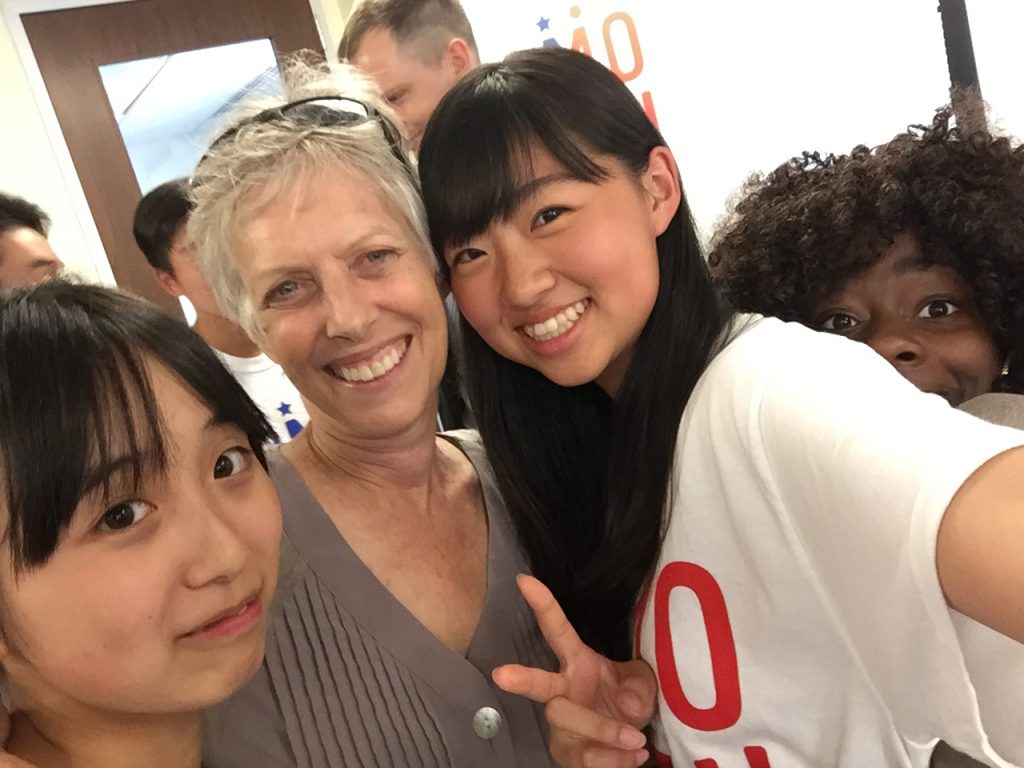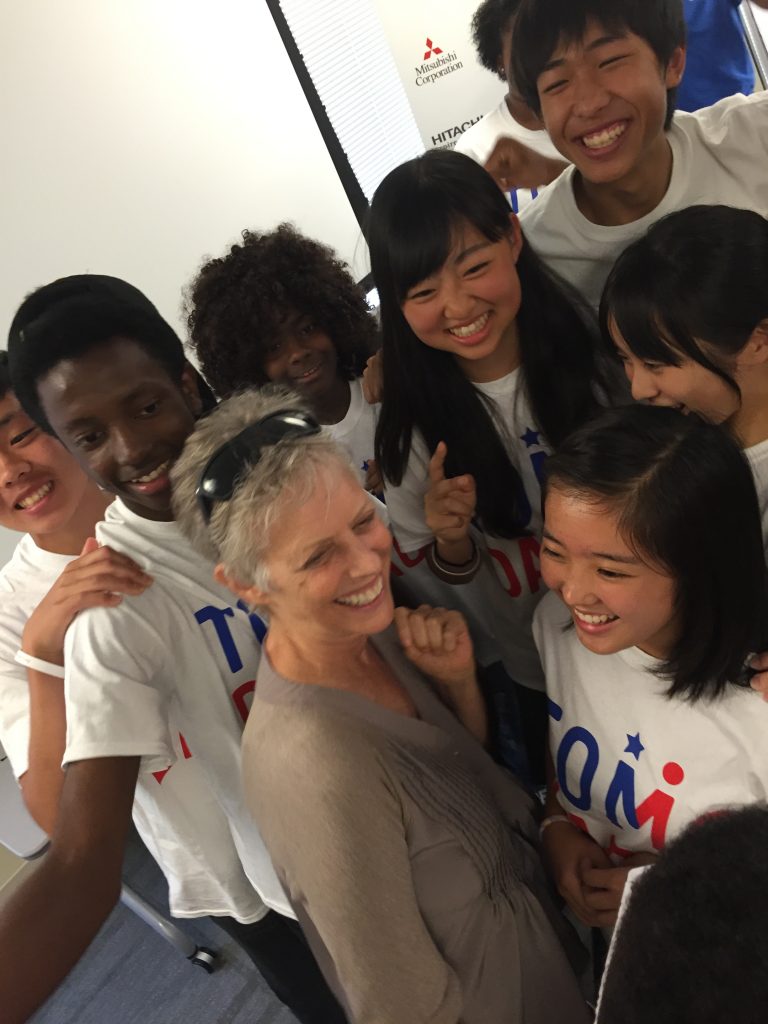
One might imagine that a young person growing up in the nation’s capital, with a wealth of international institutions, resources, and expertise so close at hand, would have a decided advantage in terms of their exposure to global issues, connections, and access to career opportunities. In fact, for most DC public school students growing up in DC – majority people of color and lower income – the global aspects of DC are a world apart and not within reach of our students in any significant way. As a former high school teacher, school district administrator, and now as director of a small nonprofit, I have spent most of my professional life trying to figure out ways to reduce barriers to access for these students to the global education, language learning, and study abroad opportunities I think they need and deserve. Thanks to many generous partners over the years, we’ve been able to help students and educators learn about and even travel to countries all over the world.
So in 2012, when we received an invitation to co-coordinate a TOMODACHI exchange program between DC and Japanese high school students, funded through the U.S.-Japan Council, of course our answer was an enthusiastic yes. At the time I had no idea where that initial “yes” would take me and Globalize DC, the nonprofit organization I lead. The TOMODACHI U.S.-Japan Youth Exchange Program ran for six wonderful years (2013-2018) and was absolutely transformative for our students. Each year DC students spent six weeks together with their Japanese peers in both DC and Japan, exploring and comparing their respective societies, cultures, traumas and resilience, and building strong personal relationships which for many still continue to this day.
But this was an unusual case for us. Things didn’t end there. Our students returned from their time in Japan expressing a strong desire to learn Japanese, frustrated that they hadn’t been able to communicate more effectively with the people they met. Unfortunately no Japanese was taught in any DC public schools at that time. So we ended up creating our own afterschool Japanese language program, Japanese Plus, for which students are now eligible to earn high school credit. And then we created a separate six-week summer program, Japan in DC, which gives DC students the opportunity to investigate and document some of the many people, places, and organizations in DC with a connection to Japan. We’ve even produced a book, based on the students’ writing and creative work in this program. We were on a roll!
Then the pandemic happened, along with a surge in anti-Asian hate and violence. After considerable research and discussion, the students in our Japanese program decided that as avid consumers of Asian culture, they had an obligation to take a stand and do something. They created a #StopAsianHate Project. After time spent researching and discussing the issue, they decided their time would be best spent focusing on education – specifically the education that the city’s public school students received. In DC, Japanese American students constitute only a tiny percentage of the school population; less than 2% of students overall identified as Asian in 2022. Most DC students have no opportunity for direct exposure or interaction with Asians or Asian Americans, and this is why our students felt education is so critical in the context of their own school experience.
By coincidence, DC had just begun the process of revising its K-12 social studies standards, which determines what gets taught in all public school social studies classrooms. So this became the initial focus of the #Stop Asian Hate Project’s work. Our students reviewed the current standards and found that coverage of Asia and Asian Americans was woefully inadequate. The standards included some study of ancient Chinese civilization, and then a fast forward to Chinese immigrants building the railroad in the American West, the bombing of Pearl Harbor, Japanese American incarceration, and the bombing of Hiroshima and Nagasaki. That was pretty much all. So since 2021 they have been advocating for much more expansive and deeper content on Asia and Asian Americans from the earliest grades, reflecting the diversity of Asia and Asian Americans, and the importance of understanding Asia outside its relationship with Europe and U.S. history. They have also called for more opportunities for DC students to meet Asians and Asian Americans and to experience Asian cultures first-hand. They have submitted written statements, have testified at State Board of Education meetings, and it looks like their advocacy is making a real difference. Of course, we’re extremely proud of our students’ work.


Now after this decade long experience with Japan, all stemming from our initial involvement with the TOMODACHI Initiative (for which we remain ever grateful), I am struck by what an unusual moment this is – or could be – for building a stronger foundation for American understanding of Japan and Asia more generally in K-12 schools.
What I’ve learned from our DC students is how deep and widespread student interest in Japan is – cutting across race, class, and schools. Not surprisingly, this is mostly due to a fascination with Japanese popular culture. Most of our students had never met a Japanese or Japanese American person before applying to one of our programs. Many had been trying to teach themselves Japanese so that they can watch anime without having to rely on subtitles. Unlike the case with other countries and languages I’ve promoted, I find this interest in Japan, and Korea and East Asia more generally, to be unique – almost entirely student-driven, often to the consternation of parents. At this point in time, based entirely on my personal observations over the last ten years, there is no other part of the world that captures student interest in the way that Japan and East Asia do today.
And yet what students learn about Asia in elementary and secondary schools, and what languages they have access to (with the exception of Chinese), is not far different from what many of us learned in school many decades ago. With such high student interest, and Asia’s growing geopolitical and cultural importance, this feels like the right time to push our education decisionmakers, even in districts that do not have high concentrations of AAPI students, to offer more Asian and Asian American content in schools, to give more students the opportunity to study Japanese and other Asian languages, and to expand out-of-school offerings that can augment in-school courses for interested students. This will not only begin to address an unmet demand, but begin to expose more young people at an earlier age to the possibilities for pursuing future careers involving Japan and Asia more broadly. And wouldn’t this be a good thing for all of us?
Thank you to Sally Schwartz (Globalize DC) for the above content and photos!